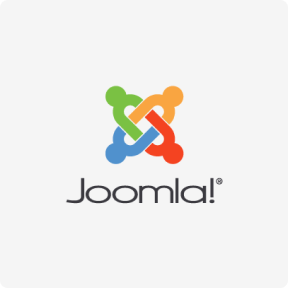This makes PaaS an appealing choice for developers who want to focus on building applications rather than managing infrastructure. It also makes PaaS ideal for companies that want to outsource the management of their development environments. Rapid application development is the primary objective of PaaS, which offers developers a platform to create, distribute, and run apps. More businesses in a variety of industries are getting their hardware and software components delivered online, including servers, storage, frameworks, tools, and ready-made apps. Companies are using PaaS as they develop their own SaaS, as they migrate to the cloud and while creating cross-platform applications that can be used on any device. Popular PaaS
providers include AWS Elastic Beanstalk, Microsoft Azure App Services, Google App Engine, IBM Cloud and Red Hat OpenShift.
This means that if you ever have a problem with your app, Back4App will be there to help you out quickly and efficiently. Back4App also offers tutorials and other resources to help you get the most out of their Platform. Back4App is built on top of AWS, so you can be sure that your app will always be up and running. AWS’s reliable servers and advanced technologies ensure that your app will always be available, even during peak times. All data is encrypted in transit and at rest, so you can be confident that your app and its users are safe.
Infrastructure as a Service
Finally, maintaining a close relationship with your cloud provider is key for ongoing support, collaboration and communication. The future promises a great acceleration of more cloud computing adoption as companies design and develop new technologies to supply that demand. Some companies predict a rebirth of SaaS technology that will be heavily focused on mobile devices. Other companies are putting stock in the trend that artificial intelligence (AI) will dominate the SaaS market in the fields like logistics, transport and retail. Of course, the more complex the SaaS, the more training is needed to fully maximize your use of these tools. With SaaS, training is often provided from within the software and users will find loads of support and how-tos on the internet if they ever get stuck.
- Before moving forward, be sure to take these potential downsides into consideration.
- Back4App is a low-code back-end solution that enables developers to quickly and easily create modern apps.
- Professionals involved in the tasks of development, testing, maintenance, delivery and support can collaborate without losing sync, even if they are in different locations.
- Tools are likely to be implemented differently across cloud providers, and that increases the cost of sustaining a multi-cloud or changing cloud providers.
- A new platform is a new environment where legacy solutions are supposed to continue to work.
- You free up time and energy by not having to worry about monitoring, maintaining, and updating a development platform, allowing you to concentrate on your main line of business.
The biggest danger of this strategy is that you can lose out on the newest updates and features and wind up using an out-of-date stack or, even worse, dealing with security vulnerabilities. The main disadvantage is that you won’t be able to take advantage of the most recent enhancements and new features, which could result in you using an out-of-date stack or posing security risks. Companies must, however, expand their computing capacity to keep up with rising demand. Traditionally, scaling up computing resources quickly has been exceedingly difficult.
Top PaaS Providers
If you’re considering using a PaaS system, it’s important to weigh the pros and cons of what it offers. This means businesses must trust the PaaS provider to properly secure their environment and ensure that their data is safe from malicious actors. This means businesses don’t have to invest in additional software licenses or hardware resources in order to stay competitive. They also offer identity management, authentication, https://www.globalcloudteam.com/ authorization, encryption, etc., which helps protect applications from malicious attacks. This means that businesses don’t have to hire additional personnel for tasks such as server maintenance, security updates, application monitoring, etc, which can save them a lot of money in the long run. This has a direct impact on the bottom line since businesses can introduce new products and services faster than ever before.
Undoubtedly, some difficulties and contradictions may arise when two systems come into contact. Thus, it’s crucial to understand possible compatibility problems beforehand and to prepare to solve them. On the one hand, it’s a great advantage that a certain part of work is done by the provider without you having to make an effort.
Lower administration costs
Simplified, that means IaaS is essentially virtual servers that the customer rents from another company that has a data center. One of the most popular questions is, what is the difference between IaaS, PaaS and SaaS? In our article, we want to have the terms SaaS, PaaS, IaaS explained in order to help you develop the right understanding of the concept and create a suitable cloud migration strategy for your organization. It’s actually inspired by the Hardware as a Service & Software as a Service models that preceded PaaS.

In this blog post, we will discuss the pros and cons of using a PaaS so that you can make an informed decision about whether or not this type of service is right for your business. Additionally, switching PaaS providers is rarely a simple operation once integration problems arise. If you launch your app on a self-built stack, keep in mind all the components that need to be periodically updated and reintegrated to stay ahead of your rivals.
When to Choose SaaS?
Easy access
to a suite of development tools means programmers can program – and businesses can quickly deploy new applications. Platform as a service offers developers a platform for software development and deployment over the internet, enabling them to access up-to-date tools. PaaS delivers a framework that developers can use to create customized applications. The organization or the PaaS cloud vendor manage the servers, storage and networking, while the developers manage the applications. Microsoft Azure’s cloud-based services are among the popular PaaS products. Produced by Microsoft, Azure cloud services can be a flexible, enterprise-grade cloud computing solution that can be employed in a PaaS capacity.

To most of us, the cloud is a magical place where our data lives safely and securely. Cloud service is important to organizations that house data about
their customers and their inventory, and it can be overwhelming – not to mention, expensive. As of the beginning of 2019, more than 70% of companies and enterprises have moved a part of their computing infrastructure to the cloud. The main benefits they get are scalability, flexibility and improved time to market. Moreover, SaM Solutions offers its own out-of-the-box PaaS solution — SaM CloudBOX PaaS. It has a flexible structure and versatile technology stack that can easily fit customer requirements.
What is PaaS? Platform as a service definition
Keeping careful notes on how each plus and minus is assessed — each time an assessment is made — is essential to getting the best results over time. A decade ago, everyone was talking about moving applications to the cloud, meaning uprooting something running on a private server and taking it to a cloud provider. The original models of cloud computing — IaaS, PaaS and SaaS — reflect three ways of doing that.
PaaS passes on a bit of more responsibility for IT management from client to cloud vendor. As more applications become available, it’ll be nearly impossible to avoid migrating to an SaaS service in some way. Because PaaS is mainly designed for developers with a thorough knowledge of Python, PHP, advantages and disadvantages of paas Node.js, Ruby, Go, or Java programming languages, it isn’t necessarily a service designed for the average user. Companies in every stage of the business lifecycle are using IaaS solutions. From global enterprises to startups, the flexibility, scalability and cost savings are hard to beat.
Critical features of AI implementation in business
Though PaaS is presently the least recognized cloud computing model, it is growing in quick numbers. According to recent research, more than 25% of businesses use PaaS in their production process and over 50% of organizations have plans to set up in the future. Popular software as a service examples include Office 365, Google G Suite (Apps), Dropbox, Salesforce, SAP Concur and Zoom.